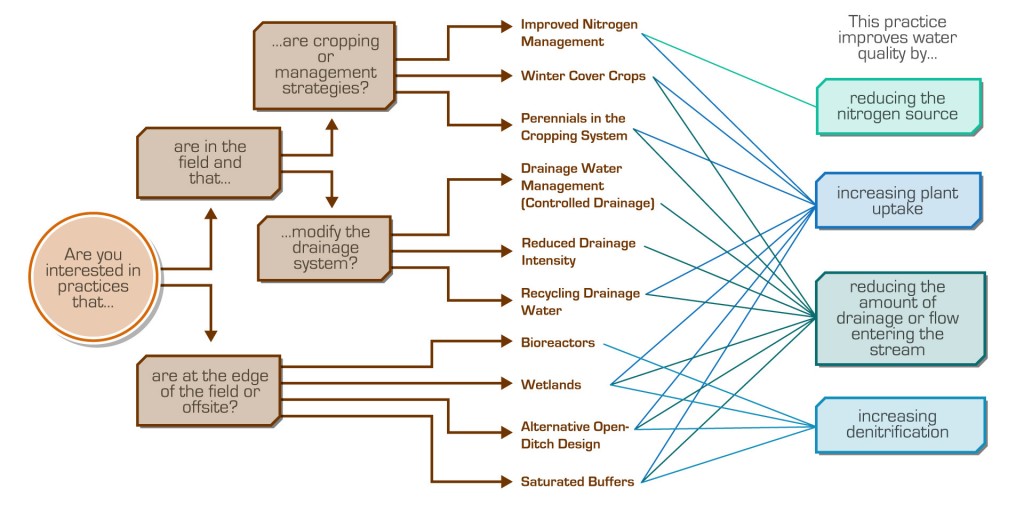Click to download an electronic copy of the Ten Ways booklet (pdf file):
Ten Ways to Reduce Nitrogen Loads from Drained Cropland in the Midwest
Or for a shorter summary, click to download the Ten Ways 4-page factsheet (pdf file):
Ten Ways Summary Factsheet
Printed copies of the booklet are no longer available on-campus, but if you are interested in such an order (>100 copies), please email LEChris@Illinois.edu to discuss a special print run at cost.
Across the Mississippi River Basin, 45% reductions in nitrogen and phosphorus loads are necessary to meet national goals established to reduce the size of the Gulf of Mexico hypoxic zone. There are a number of practices now being promoted as a part of state nutrient strategies, all of which have different N-reduction effectiveness, spatial suitability, additional benefits and impacts, and cost. No one practice will be suitable for every acre, but every acre needs at least one new practice. A newly funded North Central Region Water Network Seed Grant project, led by the University of Illinois, is underway to develop a comprehensive package of information about these drainage water quality-improvement practices. This effort is leading off with the release of a booklet entitled “Ten Ways to Reduce Nitrogen Loads from Drained Cropland in the Midwest,” and will include presentations for educators, online modules for additional audiences, and a Ten Ways summary factsheet. Click the link above to download an electronic copy of the booklet.
The Ten Ways strategies include in-field cropping and management strategies (i.e., practices that reduce nitrate in the root zone), in-field strategies that modify the drainage system (i.e., practices that reduce delivery of nitrate to the field’s edge), and edge-of-field strategies (i.e., practices that remove nitrate at the edge of the field or downstream).
Are you an educator?
Please email Dr. Laura Christianson (LEChris@illinois.edu) to request access to the PowerPoint presentation modules that accompany the Ten Ways booklet. We’ll also provide a survey for your program to help us track understanding of the the Ten Ways and to evaluate the impact of this project.

